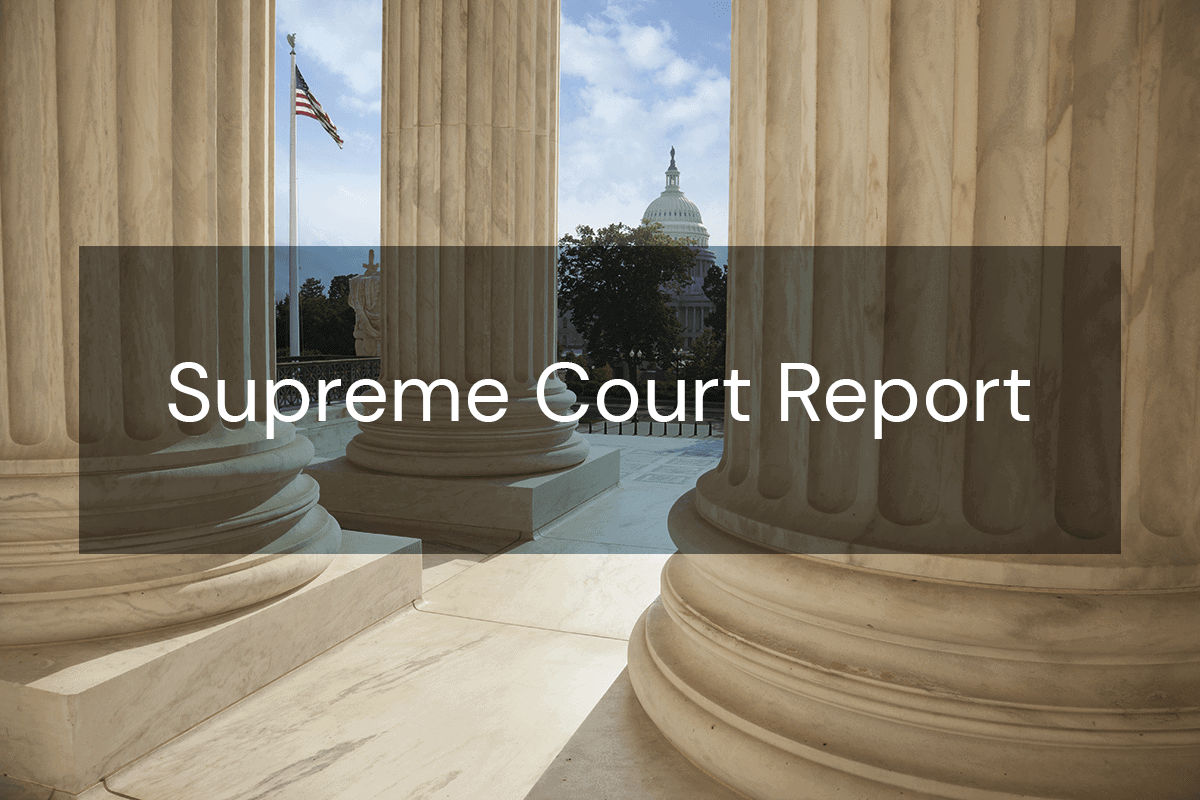-
 Director, Center for Supreme Court AdvocacyNational Association of Attorneys General
Director, Center for Supreme Court AdvocacyNational Association of Attorneys General

This Report summarizes opinions issued on April 21, 2022 (Part I).
Opinion: Cassirer v. Thyssen Bornemisza Collection Foundation, 20-1566
The Court unanimously held that the substantive law in a case brought under the Foreign Sovereign Immunities Act of 1976 (FSIA) raising non-federal claims should be decided by the forum state’s choice-of-law rules. The facts in this lawsuit date back to 1939, amid Nazi persecution of Jews in Germany. German Jew Lilly Cassirer surrendered her Pissaro painting, Rue Saint-Honoré, to the Nazis in order to obtain an exit visa to England where her grandson Claude lived. Lilly and Claude eventually made their way to the United States and tried to locate the painting over the years. Those attempts were unsuccessful, but in 1958 the German government recognized Lilly as the rightful owner of the painting. Unbeknownst to Lilly and Claude, Rue Saint-Honoré had also made its way to the United States (from 1952 to 1976) before returning to Europe as part of the private collection of German steel empire descendant Baron Hans Heinrich Thyssen-Bornemisza. In the early 1990s, the baron sold the painting to the Thyssen Bornemisza Collection Foundation (the Foundation), an entity created and controlled by the Spanish Government. The Foundation listed Rue Saint-Honoré in a catalogue of its holdings, which Claude discovered in 1999. (Clause was by then the sole heir of Lilly, who had since died.) After his informal efforts to recover the painting proved unsuccessful, Claude sued the Foundation in California federal court.
To establish federal jurisdiction for the private property dispute, Claude invoked the FSIA, alleging that the Foundation is an “instrumentality” of the Spanish Government. The FSIA “creates a uniform body of federal law to govern the amenability of foreign states and their instrumentalities to suit in the United States.” Here, the Foundation was subject to federal court jurisdiction because Claude’s claim for the expropriated painting satisfied the FSIA exception for claims involving property taken in violation of international law. 28 U.S.C. § 1605(a)(3). The FSIA did not affect the applicable substantive law for the ownership dispute, however, and the parties disagreed about which choice-of-law rule applied. Claude’s estate (he died in 2010) supported the forum’s choice-of-law rules, which applied California property law to the dispute and favored the original owners. The Foundation advocated for federal common law choice-of-law principles, which arrived at Spanish law. Based on Ninth Circuit precedent, the lower courts chose federal common law and determined after trial that the Foundation was the rightful owner of the painting under Spanish law because it purchased Rue Saint-Honoré not knowing it was stolen and held the painting long enough to own it by virtue of possession. In an opinion by Justice Kagan, the Court vacated and remanded.
The Court explained that the choice-of-law answer may be found in Section 1606 of the FSIA, requiring that “the foreign state shall be liable in the same manner and to the same extent as a private individual under like circumstances.” The Court reasoned that the non-immune foreign state or instrumentality must be “subject to the same rules of liability as a private party,” and the substantive law “must mirror the rule that would apply in a similar suit between private parties.” Considering what would happen in a suit between private parties, the Court determined that the forum’s (California’s) choice-of-law rule would govern this property dispute because it “turn[s] only on state or foreign property law, with no substantive federal component.“ The Court further explained that California’s choice-of-law rule would apply in a similar suit between private parties whether filed in state court or in federal court under diversity jurisdiction. And while the Court left resolution of the rightful owners to the lower courts, it explained that applying a federal-choice-of law rule could create a “mismatch between the Foundation’s liability and a private defendant’s [liability].” The Court added that, even if Section 1606 were not so clear, the Court would likely reach the same result because “[j]udicial creation of federal common law to displace state-created rules must be ‘necessary to protect uniquely federal interests,’” and that necessity did not present itself in a case (such as this one) “subject to standard-fare legal claims involving property, contract, or the like.”



